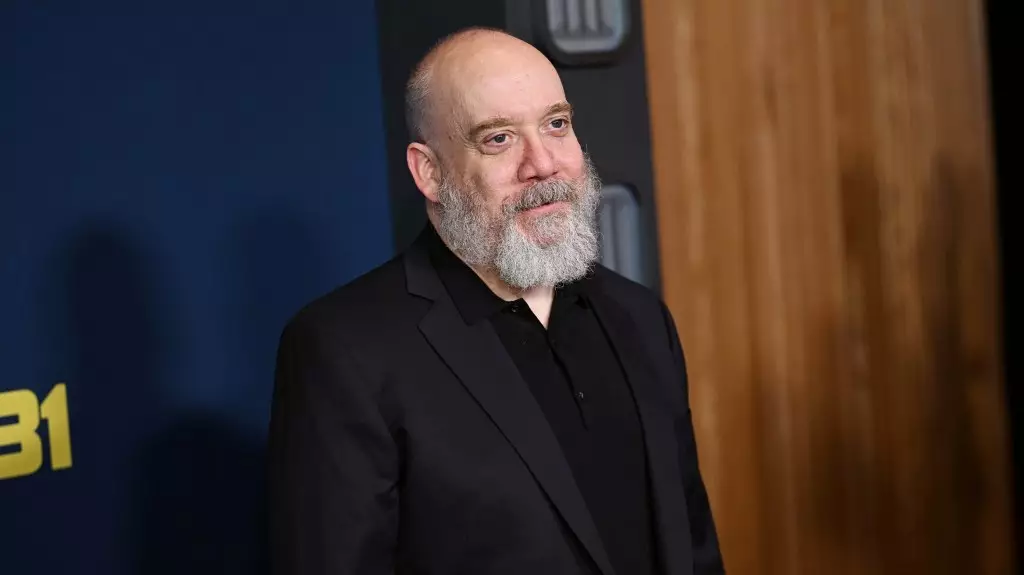The entertainment industry can often feel like a whirlwind, where headlines shift faster than one can keep track. Yet, every so often, a palpable gap is felt—an absence so profound that it transcends mere familiarity. This was recently brought to light by Paul Giamatti, who opened up about the emotional weight that the production of “Downton Abbey: The Grand Finale” carries following the passing of Dame Maggie Smith. Giamatti’s reflections cut deep, revealing not just how the film embodies a tribute to Smith, but also how it encapsulates the universal grief of losing a beloved figure in the arts. In a landscape cluttered with new faces and fleeting trends, Smith’s departure serves as a stark reminder of the rich legacies that linger long after the final curtain falls.
Giamatti’s poignant words, wherein he conveys that “not having her there is obviously a huge loss,” resonate with any viewer who has ever become attached to a character or an artist. When the glue that binds a beloved ensemble together is removed, producing any creative work tends to morph from a simple task to an emotionally charged tribute. In essence, Giamatti underscores that this latest endeavor is not merely about entertainment; it about honoring a spirit, a legacy. The fragile interplay between nostalgia and grief elevates the narrative, casting it in a greater, almost tragic light.
The Nature of Recall: Past Meets Present
Interestingly, Giamatti’s return to “Downton Abbey” was unexpected, even for him, given his relatively minor role in the franchise. His character, Harold Levinson, may not have been integral to the show’s original arc, making his re-emergence seem perplexing. Yet this speaks volumes about how stories evolve in the face of unpredictability and unanticipated loss. The notion that someone who felt peripheral could suddenly become central in a narrative designed to honor Smith is not just ironic; it’s emblematic of how art adapts to grief and memory.
Moreover, Giamatti’s lack of confidence about his character’s importance serves as a reminder of the fluidity of storytelling itself. In a world laden with cinematic universes aspiring for interconnectedness and constant reboots, it’s refreshing to see that sometimes, stories can breathe—and thrive—on nostalgia and reverence. This adds depth to Giamatti’s character, transforming him into a vessel for paying respects not only to Smith but to the legacy of the beloved series itself.
The Community of Mourning
Gareth Neame, the executive producer, echoed Giamatti’s sentiments, suggesting that the loss felt by the cast and crew is not just about Smith but a collectively shared mourning for the “matriarch of the show.” The characters, imbued with genuine emotions of bereavement, become conduits through which audiences can connect. It’s a brilliant narrative choice; instead of shying away from the somber reality that Smith’s absence creates, the production embraces it.
Such an approach raises the stakes for the overall narrative. Rather than being merely a sequel in a commercial franchise, “Downton Abbey: The Grand Finale” evolves into a multifaceted exploration of grief and remembrance. Audiences are invited to reflect on their own losses and to find solace and unity in shared experiences. This transformation from a theatrical venture into a communal ritual is not a common tactic in modern filmmaking and deserves all the applause it can muster.
Art as a Living Organism
The realm of performing arts frequently grapples with the impermanence of life. The process of creating has a unique ability to capture emotions that speak to the human experience. If anything, Giamatti—and the entire cast—illustrate how acknowledging grief can take a project to new heights. By allowing their work to be imbued with personal loss, they are not merely creating a film; they are establishing an emotional bridge, connecting viewers to complex realms of love, loss, and honor.
As we anticipate the upcoming release of “Downton Abbey: The Grand Finale,” it’s essential to engage with it not just as entertainment but as an act of remembrance. The talents involved are woven into a narrative that may ultimately transcend the immediate story. It’s an intricate tapestry that reveals how art, in its raw form, can resonate deeply and offer healing in the face of tragedy. In doing so, they challenge us not merely to watch, but to feel, grieve, and dream alongside them.


Leave a Reply